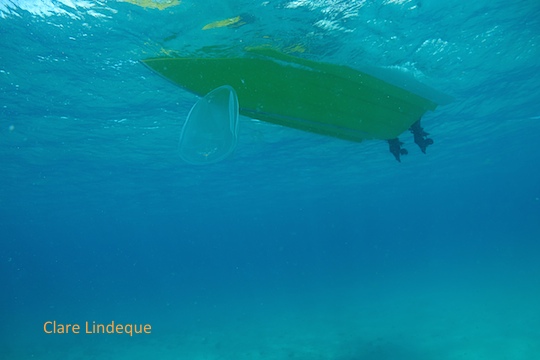
We did a beautiful May dive on the Brunswick in crystal clear, cold water, and upon rolling off the boat were greeted immediately with a fairly large group of highly structured jelly like animals, pulsing along as if on a mission to somewhere. They were hard to photograph (my best effort is above) so I took a short video of one of them.
[youtube=”http://www.youtube.com/watch?v=YPM1sbSMdxI&w=540″]
The JellyWatch facebook page helped with identification – they do not appear in any of the marine ID books we own. This species is probably Ocyropsis maculata immaculata, a type of comb jelly that is widely and quite abundantly distributed (although WoRMS doesn’t show it as occuring off the Cape). Apparently (says wikipedia) they use their lobes to escape from danger, clapping them together in order to create a water jet that propels them backwards. They are open ocean animals, which suggests that the lovely clean water we were enjoying right at the north western end of False Bay had been brought in by an upwelling from the deep sea outside the bay, driven by the north westerly winds we’d been having.
They are ctenophores, and instead of stinging cells they have sticky cells called colloblasts that they use to catch food. Every website I’ve looked at mentions what “voracious predators” they are! Other ctenophores that we see locally are comb jellies and sea gooseberries. (More pictures of comb jellies around the Cape Peninsula can be seen here, here and here.) All of these species have little disco lights running along their bodies; this is in fact light being refracted off their eight rows of cilia, which are used for locomotion.







